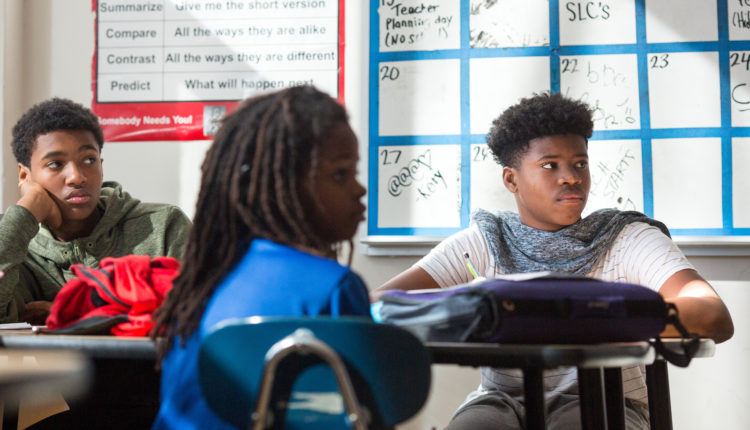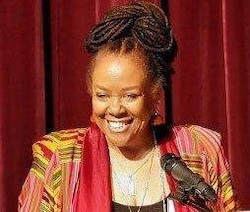
Ramona Edelin and Anne Herr: In tough times, our most disadvantaged students need our help
The District of Columbia is experiencing the damage caused by the coronavirus, the recessionary impact of the lockdown, and the ongoing national trauma of murder, racism and continued violence that led to protests, clashes and a temporary curfew. All of this has resulted in a huge hit to city revenues and uncertainty about what income might be forthcoming down the road. Additionally, against precedent in previous stimulus legislation, the U.S. Senate classified the District as a territory, depriving DC of $725 million in federal government relief that it would have received if treated as a state.

Despite these extraordinary challenges and the lack of federal support, Mayor Muriel Bowser has proposed a 3% increase in the Uniform Per Student Funding Formula, which funds operating costs for DC Public Schools and the city’s public charter schools, for fiscal year 2021. This is a strong and welcome signal of the mayor’s priorities amid the $722 million revenue loss for the current budget and currently estimated $774 million loss for next fiscal year.
While sacrifices and costs will be borne by all District residents for some time — and while all students are experiencing the adverse impact of learning loss — the city’s most disadvantaged children will be disproportionately affected. Disruption to education carries greater consequences for these students, as they are already more likely to be performing below their grade level and are less likely to be able to access distance learning at home. Moreover, at-risk students rely upon school for wrap-around supports such as nutritious meals and school-based mental health services.
The city’s most at-risk students disproportionately live in the city’s least affluent neighborhoods — communities on which the coronavirus has taken its greatest toll. Fully one-third of coronavirus-related deaths have occurred in wards 7 and 8, the city’s most underserved, even though those wards together comprise less than one-fourth of the DC population.
What, then, can the government do as the budget sits with the DC Council for review? For starters, the council could ensure that schools need not raid their operating funds to pay for the personal protective equipment, additional cleaning and accommodations for social distancing that will be required under reopening protocols. That funding should instead come via a citywide recovery strategy that draws on federal dollars.
Secondly, the council could ensure that the least advantaged students get the resources they need by increasing weighted funding for at-risk students. This provides schools with additional per-student funding for at-risk students, which is currently defined as those who are in foster care; homeless; in receipt of governmental income and food assistance; or enrolled in high school at a grade level below their age group. By raising this weight from 0.225 of the base UPSFF to 0.370 — as recommended years ago in the city’s own UPSFF Adequacy Study — these students could be better insulated from learning loss and other damage from the COVID-related disruption to their education.
Thirdly, the toll of the pandemic and prolonged social isolation on student mental health requires a dramatic and immediate increase in services. While the exact impact is impossible to calculate, it is clear that students and adults throughout the city have experienced various mental health challenges and barriers to services during COVID-19.
The current funding level for school-based mental health services is not sufficient to provide students the supports they need, and cuts to the Department of Behavioral Health’s budget will negatively affect the well-being of students and families. While a $1.5 million investment of federal relief funds is a start, it is not enough to address the need, particularly if it simply replaces local funding rather than supplementing it.
By allowing schools the funds to provide much-needed additional and timely mental health support, council members would ensure that students have access to trained mental health professionals and trauma-informed instructional practices for a challenging new school year.
Finally, the pandemic has highlighted the extent of the digital divide, and now is the time to address it. Since schools will likely need to rely on distance learning at least for portions of the upcoming school year, providing universal access to technology and the internet will allow students to engage in productive learning — while also ensuring that they and their families can get health care, social services and mental health support online. This would be an investment in both the educational and economic future of our city.
Recognizing that public education is essential and that it can and should be a tool for justice, the mayor prioritized investment in it. Let’s now turn to protecting the most at-risk students who have suffered disproportionately from closed schools — and ensuring that schools aren’t forced to divert education resources to the costs of dealing with the coronavirus crisis.
Ramona Edelin is executive director of the DC Association of Chartered Public Schools, and Anne Herr is interim co-executive director of Friends of Choice in Urban Schools.
About commentaries
The DC Line welcomes commentaries representing various viewpoints on local issues of concern, but the opinions expressed do not represent those of The DC Line. Submissions of up to 850 words may be sent to editor Chris Kain at chriskain@thedcline.org.


Comments are closed.